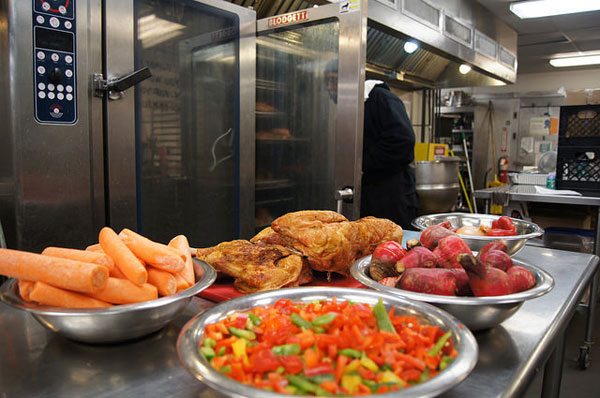
January 2, 2018; Denverite
“A 2017 report by the Natural Resources Defense Council (NRDC) says Americans throw out 400 pounds of food per person per year,” notes Kevin Beaty in Denverite—an amount, Beaty adds, equal to roughly 40 percent of all available food in the country. This throwing away of food takes place even though an estimated 41.2 million Americans are, according to the US Department of Agriculture (USDA), food insecure, which the USDA defines as being uncertain of having, or unable to acquire, enough food to meet one’s nutritional needs.
Fortunately, efforts to reduce food waste are growing across the country. NRDC itself notes that an initial report it released in 2012 helped lead the USDA in 2015 to declare a goal to reduce food waste in half by 2030. More broadly, a range of innovative nonprofit efforts have expanded. NRDC acknowledges that the data are spotty, but contends that “much progress has occurred.” In Denver, Beaty’s profile of We Don’t Waste tells one such story. Indeed, NRDC itself has profiled Denver and observes that Denver “is fortunate to have a fairly extensive food rescue system.”
Denver, Beaty notes, presently salvages up to 70 percent of all grocery waste. Beaty adds that Denver fills “a greater portion of [its] hunger needs with waste than New York City or Nashville and [its] “meal gap” is overall smaller than those two cities.”
We Don’t Waste was founded by Arlan Preblud, a former attorney, in 2009. “He started We Don’t Waste in his Volvo,” Beaty writes. “If you had a loaf of bread, I was willing to take that,” Preblud says. “I didn’t know how it was going to work.”
Today, the nonprofit operates a small fleet of trucks. Beaty notes that according to We Don’t Waste’s 2016 annual report, distribution has increased from rescuing $2 million worth of food in 2014 to rescuing almost $33 million worth of food in 2016.
Sign up for our free newsletters
Subscribe to NPQ's newsletters to have our top stories delivered directly to your inbox.
By signing up, you agree to our privacy policy and terms of use, and to receive messages from NPQ and our partners.
Most food waste involves what gets thrown out at home, but, Beaty points out, “about a tenth of food losses come from commercial distribution, usually prepackaged in bulk and ready to eat.” This is the market niche where We Don’t Waste works.
In particular, We Don’t Waste, according to its annual report, “focuses on perishable food items such as fresh produce, lean proteins, dairy products and pre-prepared food.” Beaty notes that a typical food distributor might have to reject 10 percent of what comes into the distribution center. Beaty explains that, “Produce can be ugly. Yellow peppers can look a little too green, tomatoes can have slight bruising, squash might be a little too big or a little too small. While beauty might be in the eye of the beholder, commercial grocery stores have objective specifications all their products must meet.” We Don’t Waste, however, can claim these “seconds,” which would otherwise be thrown out, and redistribute the healthy (if blemished) food to those who need it. The nonprofit claims that its cost to distribute a meal in 2016 was six cents per meal. The nonprofit provided Denver residents with over eight million meals that year.
Building a food recovery system, however, requires the efforts of many parties. Collecting food is not enough. Tim Sanford, director of operations at We Don’t Waste, says the group could potentially fill twice as many trucks, but collecting more food is not helpful unless there is a network robust enough to distribute the increased supply. “The underlying problem is not recovery,” says Sanford. Rather, reports Beaty, the current constraint in Denver is “the ability of food pantries or shelters to accept it fast enough.”
“Nationally,” Beaty writes, “grocery stores are also getting on board” with reducing food waste. Beaty adds that, “there are a slew of pilot projects from Walmart to Whole Foods that have tried to sell ugly vegetables.” But many of these are tentative trials, Beaty observes. A challenge that remains, remarks Beaty, is that “Some buyers just want the cream of the crop.” Sanford concurs that customers often expect “perfect, perfect food.”
Given this market reality, the efforts of We Don’t Waste and its partners, Beaty contends, make a critical difference. “If we’re going to be so picky about what we buy,” Beaty concludes, “at least we have ways to get that would-be waste into the hands of someone who can use it.”—Steve Dubb











